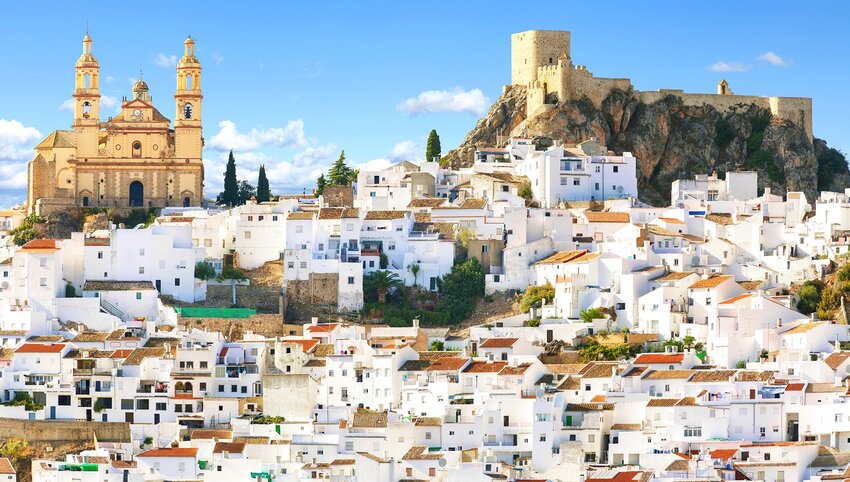Many of the world’s cities are known for their vibrant, multi-colored neighborhoods: Cape Town’s Bo Kaap in South Africa, for instance, Burano’s waterfront homes in Venice, Italy, or the Old Town of Cartagena, Colombia. These rainbow-hued places lift the spirits and leave a lasting impression. But a handful of places stand out for their decision to single out just one color, making a name for themselves in the process. If you’re keen to immerse yourself in one of those, find out more as you discover the most colorful cities in the world with us.
Chefchaouen, Morocco
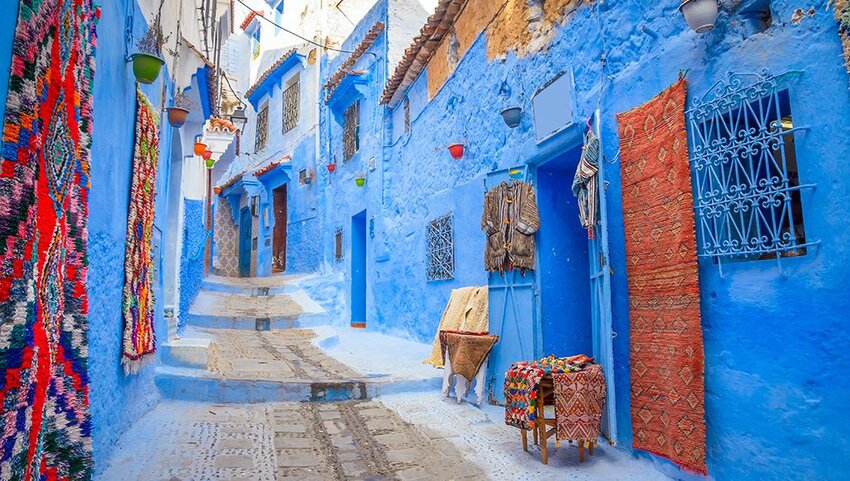
Step off the bus in Chefchaouen and you’ll quickly notice that its buildings have one thing in common: they’re almost all painted blue. There’s nothing subtle about it either; the shades used are the boldest of cobalts and turquoises. The paint reaches every inch of the cityscape – walls, steps, doors, the lot. The effect is both mesmerizing and energizing. But this is no hidden gem: as you stroll through the narrow alleys and stairways of the city’s old town, you’ll be squeezing past influencers posing in carefully chosen outfits that pop against this monotone backdrop. Nevertheless, the city was blue long before the internet existed, though no one quite knows why. One theory is that the color wards off mosquitoes, while another claims it was the color of choice of the city’s Jewish community.
Jaipur, India
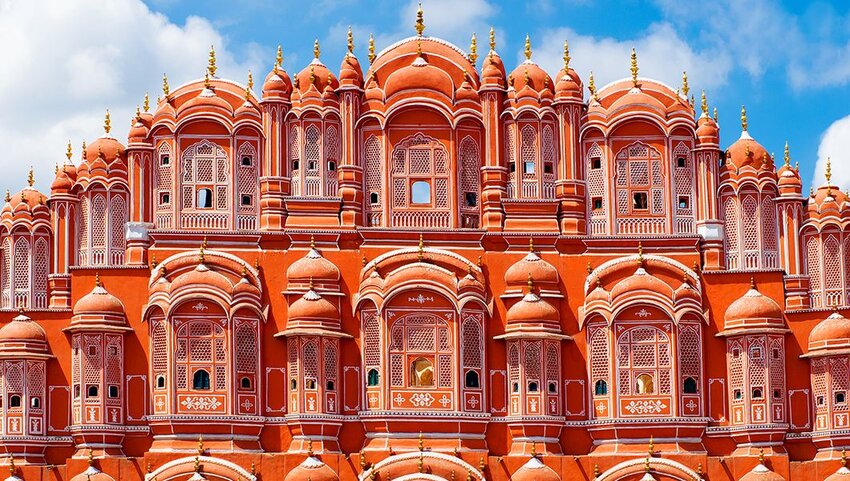
Jaipur is referred to as India’s Pink City. Many of its buildings have a pink hue, which dates back to the 19th century and a visit from Prince Albert, the eldest son of Queen Victoria. Maharaja Sawai Ram Singh II wanted to demonstrate his hospitality to the British Royal Family and so ordered all the buildings to be painted rose pink in the prince's honor. It turned out that the Maharaja’s wife was pretty keen on the color and put pressure on her husband to legislate so that the tradition of painting buildings this pretty shade could continue. The city’s most recognizable pink building, however, predates the Royal visit. The beautiful Hawa Mahal Palace was constructed in 1799 out of red and pink sandstone. It’s known for its intricate latticework and hundreds of windows.
Izamal, Mexico
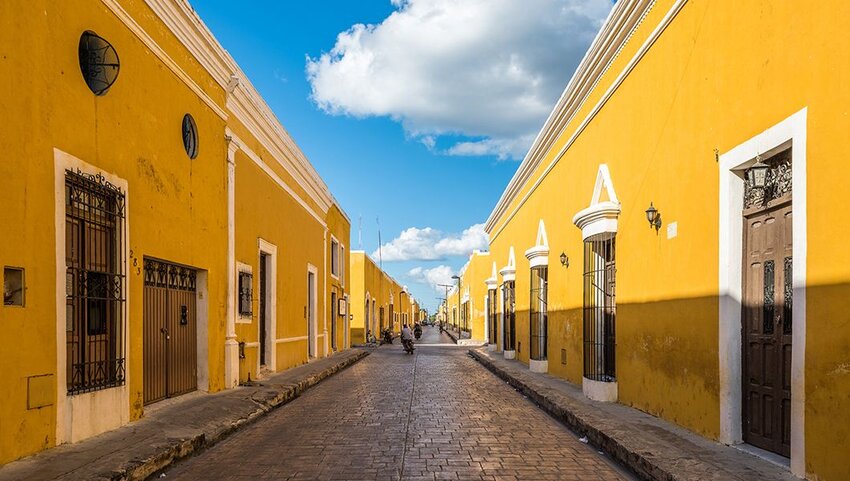
Izamal is located in the Yucatán Peninsula, not far from Mérida. Its nickname is “La Ciudad Amarilla” and it’s gone big on egg yolk yellow. Most people are a little hazy on why, but it seems likely that some of the city’s buildings were spruced up in honor of Pope John Paul II’s visit in 1993. There’s logic to this argument, as the Vatican’s flag is yellow and white. After that, it seems the city’s renovation took on a life of its own. Today, the impact of so many buildings painted in the same shade is a powerful one. If you’re thinking of visiting, Izamal’s most important landmark is the Convento de San Antonio de Padua, which was built in the 16th century and still retains its original function. Tick off another yellow must-see, a church called Capilla de los Remedios, before visiting Kinich Kak Moo, a Mayan temple that fortunately has been left in its original state.
Olvera, Spain
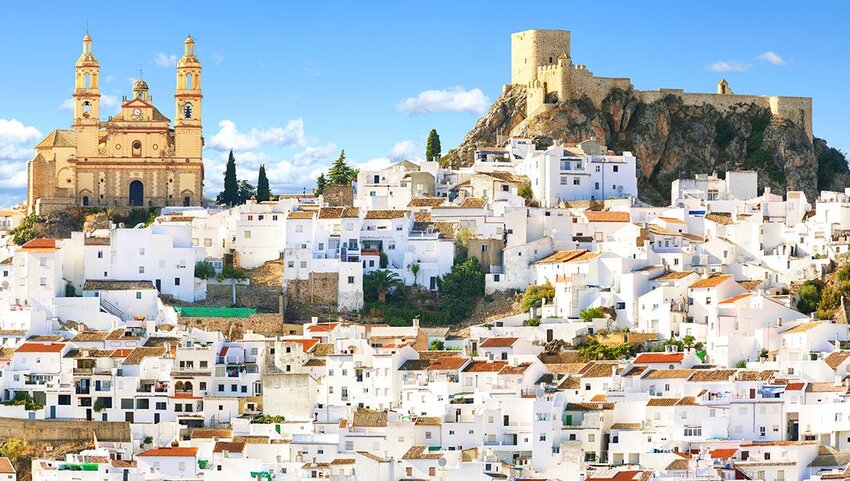
Spain’s “pueblos blancos” litter the Andalusian landscape, providing the framework for a scenic road trip. One of the biggest is Olvera. Approach the town from the neighboring village of Sentinel de las Bodegas to gain the full effect of Olvera’s whitewashed houses cascading down the hilly site. Make a pitstop en route at the Santuario de Nuestra Señora de los Remedios, a centuries-old church whose terrace offers a panoramic view of the town from across the valley. Once you reach your destination, the labyrinthine streets of Olvera’s old town lead uphill to its castle, built in the 12th century to form part of the defensive system of the Nasrid kingdom of Granada. From this vantage point, you’ll get a different color palette, as you gaze down at terracotta roof tiles and the grey-green of distant olive groves.
Collonges-la-Rouge, France
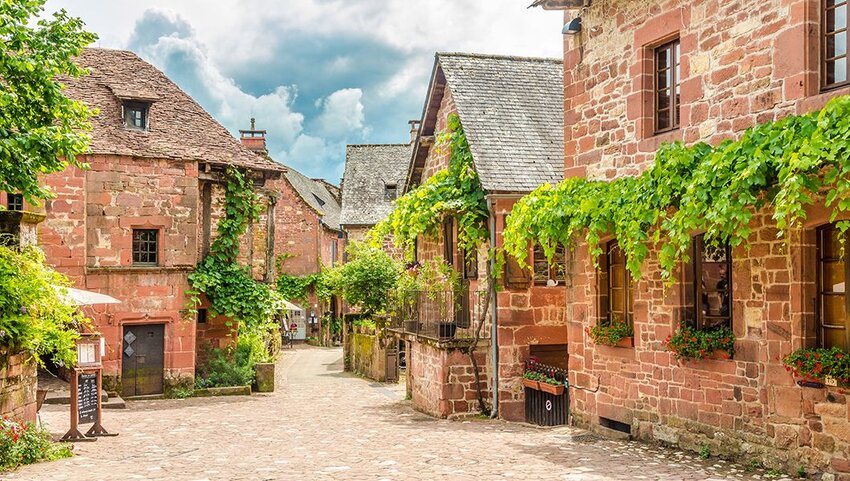
The delightful town of Collonges-la-Rouge is located in the heart of France’s Dordogne region. It’s a real treat if you appreciate architecture. Traditionally, buildings here were constructed from the local sandstone, which gets its distinctive red tones from the high iron oxide content of the rock. Wander along lanes lined with turreted medieval homes topped with the area’s characteristic lauze roofs. Among the most interesting are the 16th-century Maison de la Sirène, now a museum, and the Château de Benge on Route du Friac. Keep an eye out for myriad features such as mullioned windows, porches, and quirky sculptures. The bucolic scene continues out into the surrounding countryside, where chestnut and walnut orchards punctuate tranquil meadows.

